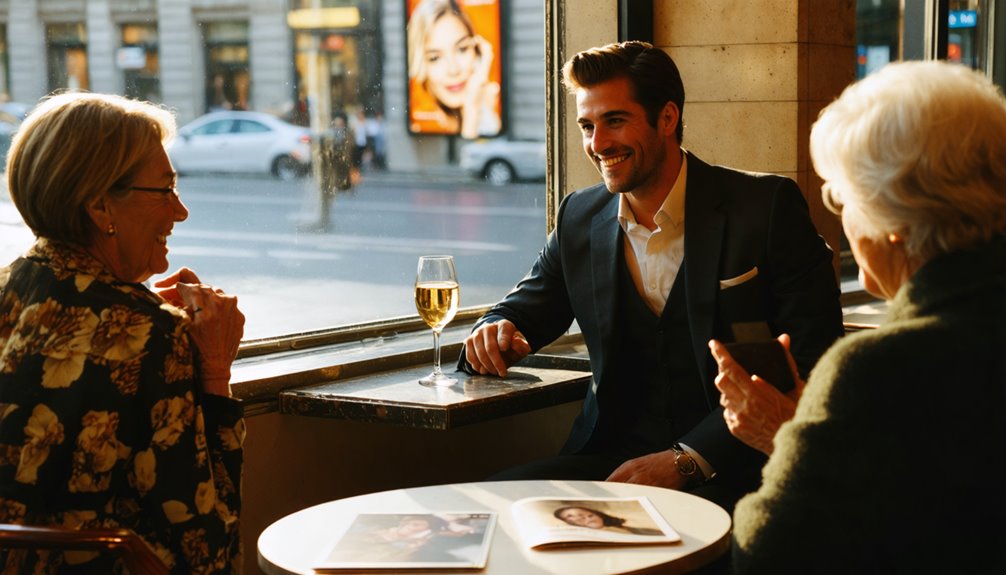Why Do Men Like Younger Women? Psychological and Social Factors Explained

Why do some men prefer younger women? We often chalk it up to “biology,” but that’s only part of the story. Evolutionary cues like youth and symmetry mix with cultural scripts, media ideals, and status dynamics. Add life-stage goals, personal insecurities, and the validation chase, and the picture gets complicated fast. Yet research also shows huge variability—plenty of men don’t fit the stereotype. Let’s unpack the factors that matter most, and where the myths fall apart.
Evolutionary Theories and Attraction Cues

Even if culture shapes our tastes, evolution still leaves fingerprints on attraction. When we look at why men often prefer younger women, evolutionary theories point to mate selection tuned to reproductive success. We notice fertility cues—clear skin, bright eyes, facial symmetry—because they’ve historically signaled health. Hormonal signals like youthful estrogen profiles can correlate with fecundity, subtly influencing what looks appealing. We’re not endorsing stereotypes; we’re mapping instincts that nudged our ancestors’ choices. Symmetry suggests developmental stability, which our brains read fast. These quick judgments aren’t destiny, but they explain why certain looks catch attention before thought kicks in.
Cultural Norms and Media Representation

We can’t ignore how beauty standards shape what we think is desirable, often equating “fresh-faced” with “more attractive.” From billboards to TikTok, advertising keeps selling a youth ideal that trains our eyes—and expectations—over time. Let’s unpack how these cultural cues nudge preferences long before we call them personal taste.
Beauty Standards Shaping Desire
Often, the story starts with what we see on screens and billboards: youth packaged as the ultimate beauty benchmark. We learn to equate certain cues with desirability—smooth skin texture, balanced facial symmetry, glossy hair importance, and “ideal” body proportions. These signals are framed as universal, yet they’re curated by trends, filters, and casting choices that compress beauty into narrow templates. When we internalize these cues, we may mistake them for instinct rather than conditioning. That’s how preferences form: repetition becomes truth. If we want healthier desire, we should widen the lens—value diverse features, shifting styles, and the individuality behind every face.
Youth Ideal in Advertising
Usually, ads treat youth like a universal currency—fresh faces, dewy skin, and hyperenergetic bodies selling everything from soda to skincare. We see it everywhere: glossy campaigns equate “young” with desirable, successful, and modern. Through celebrity endorsements, brands attach youthfulness to cool credibility, telling us we’re closer to status if we mirror that look. The visuals push aspirational lifestyles—nightlife, travel, effortless productivity—packaged in twenty-something aesthetics. Over time, these cues nudge our perceptions, especially men’s, normalizing attraction to younger women as a badge of liveliness. If we don’t interrogate it, the market’s template becomes our template, shaping desire more than we admit.
Status, Power, and Social Dynamics

Let’s look at how status signals shape attraction: many of us link youth with prestige, which can make younger partners read as social capital. We should also ask who holds the power in age-gap relationships, because bigger gaps can subtly shift control and decision-making. Together, these dynamics influence what we label as “preference” versus what’s rewarded in our social circles.
Prestige and Youth Associations
While age gaps can reflect genuine connection, we can’t ignore how prestige and youth get tangled in status games. We see it in celebrity culture, luxury ads, and social feeds: pairing with someone younger can read as status symbolism, a public cue that signals vigor, resources, and access. Youth prestige works like a cultural shortcut—people project energy, novelty, and future promise onto younger partners, then link those qualities to the older person, too.
Let’s name the pressure: institutions and media reward appearances that look “ascending.” When we recognize the script, we can ask better questions—about motives, authenticity, and what we truly value in connection.
Age Gaps and Control
Status signals don’t just shape attraction; they can tilt the power balance. When an age gap enters the picture, we often see power dynamics shift—sometimes subtly, sometimes starkly. We need to ask who benefits, who compromises, and how control narratives get normalized. Let’s break it down:
- Age-differential resources can translate into decision leverage and gatekeeping.
- Social scripts may reward compliance, blurring intimacy boundaries under “mentorship.”
- Economic asymmetries intensify reliance, making exit costs higher.
- Public perception can shame the younger partner, limiting voice.
We can still build mutual respect by naming power, setting boundaries, and agreeing on transparent decision rules.
Life-Stage Alignment and Relationship Goals
Because timing shapes compatibility, life-stage alignment often drives why some men gravitate toward younger partners. When we zoom in on goals—career momentum, travel, kids, or flexibility—timing compatibility matters. If one person wants to nest while another wants to explore, friction follows. But when shared priorities click, age becomes less central than pace: how quickly we move, what we’re building, and when.
We also see practical rhythms. A man settled in his career may prefer someone open to relocating or starting a family soon; a younger partner might be there too. It’s not universal, but aligned timelines streamline commitment and reduce misunderstandings.
Insecurity, Self-Image, and Validation
Timing helps some couples click, but there’s another layer we don’t always admit: ego. When age gaps enter the chat, insecurity, self-image, and validation seeking can quietly steer choices. We’re not blaming; we’re noticing the self esteem dynamics that shape attraction and status.
1) We chase reassurance: younger partners can mirror vigor back to us.
2) We manage loss fears: attention soothes aging anxieties.
3) We script identity: dating younger can signal desirability to peers.
4) We avoid comparison: power gaps can feel safer than equals.
If we want healthier bonds, we check our motives, communicate needs, and build esteem internally.
Myths, Stereotypes, and What Research Actually Shows
Although the cliché says “men just want youth,” the data paints a messier picture. We hear sweeping claims, but many are myths amplified by media influence. Stereotypes flatten real dynamics: attraction isn’t just age; it’s context, personality, timing. Research finds modest preferences shaped by gender norms, fertility cues, and perceived vigor, but also by proximity, shared interests, and socioeconomic factors. Studies show men’s stated ideals differ from actual choices. Cultural scripts nudge us—status signals, beauty standards, and algorithms all lean young. When we strip the hype, we see complexity: evolving roles, longer lifespans, and mutual selection shaping who connects with whom.
When the Pattern Doesn’t Fit: Variability and Counterexamples
Even with the headline narrative in mind, we see plenty of stories that don’t match it. Some men date older partners, others prefer peers, and many prioritize shared values over age. That variability reminds us that generational preferences aren’t destiny; culture, context, and timing matter.
- We meet couples where age gaps reverse—she’s older, he’s younger—showing individual exceptions.
- Career stage can trump age; aligned goals beat birth years.
- Communities shape taste: subcultures and cities create distinct generational preferences.
- Personal histories—divorce, caretaking, trauma—reset priorities.
Conclusion
So where does this leave us? We’ve seen how evolution, culture, status, and self-image nudge preferences—while life-stage fit and shared values ultimately shape what works. Let’s resist myths that flatten desire into clichés and remember the data: men’s tastes aren’t uniform, and real relationships are complex. If we stay curious, challenge our assumptions, and prioritize consent and respect, we make space for healthier choices—whatever the ages involved. In the end, compatibility beats stereotypes every time.
